Share
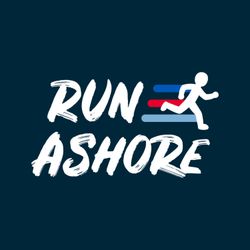
Run Ashore
Run Ashore is a podcast that follows the virtual route of the 2022 Bravery Trek fundraiser. Exploring 12 sites of historical significance to the Royal Australian Navy.
Latest episode
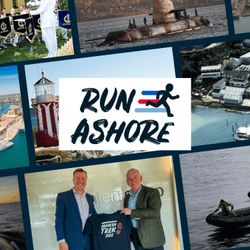
15. At The Finishing Line
23:47||Ep. 15In this final episode of the season, we reflect on the success of the Bravery Trust Fundraiser, Bravery Trek, and just how important the Bravery Trek is to the cause of supporting our veterans.Take part in the celebrations by toasting to such an important cause with CEO Belinda Wilson, Murray Bruce, and host, David Pembroke.We at contentgroup would like to extend a big thank you to everyone who participated in the Trek and donated to the Bravery Trust. We would also like to thank all those who took a seat in the Run Ashore podcast studios to share stories close to the heart of the Royal Australia Navy; Belinda Wilson, Hon Matt Keogh MP, the Minister for Veterans’ Affairs and Defence Personnel, Kristine Colliver, Commander Aaron Scott, Commander Michael Miller, Commanding officer Michael Nipperess, Rear Admiral (Retd) Simon Cullen, Captain (RAN) Viktor Pilicic, Colonel John C.Platt CSC (Retd), Brigadier (Retd) Bill Sowry and Murray Bruce. Although the Trek has come to a close, you can still donate to the cause until the 24th of November. To donate now: https://bit.ly/3A1Ebb7
More episodes
View all episodes
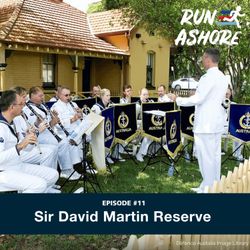
11. Sir David Martin Reserve
20:34||Ep. 11In this episode we welcome Brigadier (Retd) Bill Sowry to the series to discuss the history of Sir David Martin Reserve. Host of Run Ashore, Mark Cooper and Bill explore the history of Sir David Martin Reserve and the legacy of the man after which it was named. Three facts from this episode:In late 1957 Sir David returned to England where, after attending specialist gunnery training, he undertook exchange service with the Royal Navy in the destroyer, HMS Battleaxe. During a successful command, Torrens escorted HMY Britannia from Norfolk Island to Port Moresby, Papua New Guinea, in February during Queen Elizabeth II’s tour of the South-West Pacific.Later in 1988 Martin received the New South Wales Father of the Year Award and in August he accepted the government’s offer to become the State’s 34th Governor. Sworn in on 20 January 1989, he was the first RAN officer to hold the position. In December he was appointed KCMG.To find out more information about Bravery Trust: https://www.braverytrust.org.au/To donate to/ participate in this years Trek: https://braverytrek.com.au/For more on Sir David Martin Reserve: https://www.navy.gov.au/biography/rear-admiral-sir-david-james-martin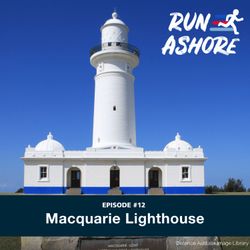
12. Macquarie Lighthouse
15:11||Ep. 12In this episode we welcome Brigadier (Retd) Bill Sowry to the series to discuss the history of Macquarie Lighthouse. Host of Run Ashore, Mark Cooper and Bill explore the history of the nations first lighthouse, the importance of its location and its significance to the Royal Australian Navy. Three facts from this episode:The lighthouse and associated buildings were designed by James Barnet and built from 1881 to 1883.The lighthouse became fully automated in 1976.The lighthouse and associated site were added to the New South Wales State Heritage Register on 2 April 1999 and to the Commonwealth Heritage List on 22 June 2004.To find out more information about Bravery Trust: https://www.braverytrust.org.au/To donate to/ participate in this years Trek: https://braverytrek.com.au/For more on Macquarie Lighthouse: https://www.harbourtrust.gov.au/en/our-story/harbour-history/history-of-macquarie-lightstation/
13. Hornby Lighthouse
18:44||Ep. 13In this episode we welcome Brigadier (Retd) Bill Sowry to the series to discuss the history of Hornby Lighthouse. Host of Run Ashore, Mark Cooper and Bill explore the history the lighthouse, the importance of its location and its significance to the Royal Australian Navy.Three facts from this episode:Hornby Lighthouse was erected as a result of two quite tragic events; the sinking of the Dunbar and the sinking of the Catherine Adamson both in 1857. The light was opened by Sir William Denison, Governor of New South Wales, in 1858. It was named after the family of Governor Dennison’s wife, whose father became Admiral Sir Phipps Hornby, Commander in Chief of the British Pacific Fleet in the 1860s. Dawson, the same architect who designed the lighthouse had also designed the lightkeepers cottages. Both are simple Georgian style sandstone cottages. The sandstone was quarried from the local cliff faces. To find out more information about Bravery Trust: https://www.braverytrust.org.au/To donate to/ participate in this years Trek: https://braverytrek.com.au/For more on Hornby Lighthouse: https://lighthouses.org.au/nsw/hornby-lighthouse/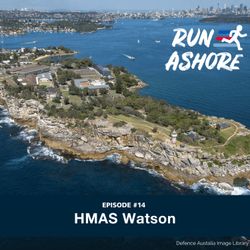
14. HMAS Watson
14:34||Ep. 14Host of Run Ashore, Mark Cooper and Commander Aaron Scott explore the history of HMAS Watson, its importance to the Royal Australian Navy and why it's location is significant.Three key facts from this episode:The role of Watson is to prepare Officers and Sailors of the Royal Australian Navy to go to sea and to be a part of the team that contributes to Fleet commitments and outcomes - "to fight and win at sea".The first permanent military presence on South Head commenced in 1871 with the development of Artillery emplacements to defend the Port of Sydney. Today Watson has a ship’s company of 300 who are solely dedicated to providing the Fleet Commander Australia with personnel trained to perform war fighting roles at sea. To find out more information about Bravery Trust: https://www.braverytrust.org.au/To donate to/ participate in this years Trek: https://braverytrek.com.au/For More on HMAS Watson: https://www.navy.gov.au/establishments/hmas-watson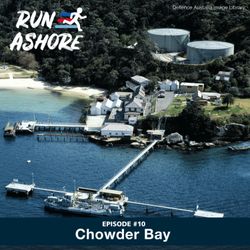
10. Chowder Bay
20:13||Ep. 10In this episode we welcome Captain (RAN), Viktor Pilicic to the series to discuss the history of Chowder Bay. Host of Run Ashore, Mark Cooper and Viktor explore the history of Chowder Bay, it's importance to the Royal Australian Navy and why it's location is significant.Three facts from this episode:In the 1890s, a base was built at Chowder Bay for the Submarine Mining Corps. Mines were attached to underwater cables that stretched across the harbour from Chowder Bay. These mines were designed to detonate if an enemy ship entered the harbour, this was one of the first uses of electricity for such a purpose.Eventually, technology rendered the underwater mines and cables obsolete, and the Submarine Mining Corps closed in 1922. After that, Chowder Bay became a depot and barracks for Army engineers, and in the 1980s, it was the site of the Army Maritime School. The Maritime School closed in 1997 and the military withdrew soon after.To find out more information about Bravery Trust: https://www.braverytrust.org.au/To donate to/ participate in this years Trek: https://braverytrek.com.au/For more information on Chowder Bay: https://www.harbourtrust.gov.au/en/our-story/harbour-history/history-of-chowder-bay/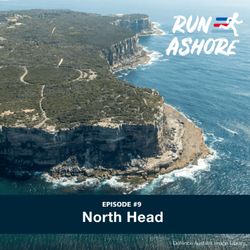
9. North Head
26:13||Ep. 9In this episode we welcome Colonel John C. Platt, CSC (Retd) to the series to discuss the history of North Head. Host of Run Ashore, Mark Cooper and John explore the history of Garden Island, it's importance to the Royal Australian Navy and why it's location is significant.Three facts from this episode:In 1945/46 the Royal Australian Artillery moved to North head and was based there until 1997 before moving to Puckapunyal in Victoria. The quarantine station is also located on North Head. From the 1830s until 1984, migrant ships arriving in Sydney with suspected contagious disease stopped inside North head and offloaded passengers and crew into quarantine to protect local residents.North Fort was strategically placed at the northern entrance to Sydney Harbour, the fort was part of a defence system that spanned 300km of coastline during World War II.To find out more information about Bravery Trust: https://www.braverytrust.org.au/To donate to/ participate in this years Trek: https://braverytrek.com.au/If you would like to visit North Fort: https://www.harbourtrust.gov.au/en/see-and-do/tours/defence-of-sydney/